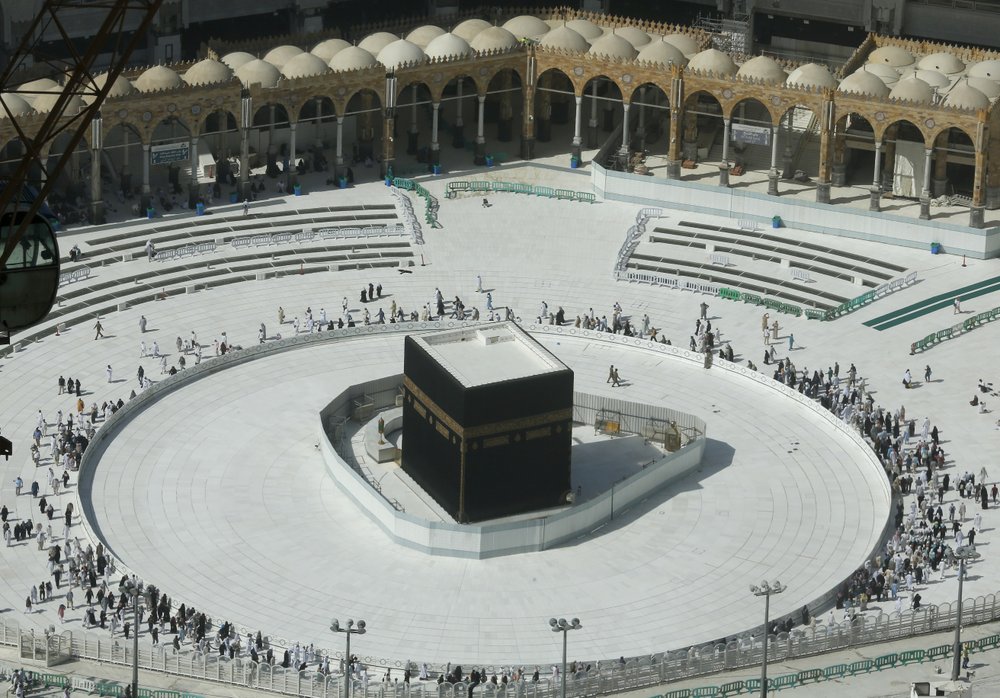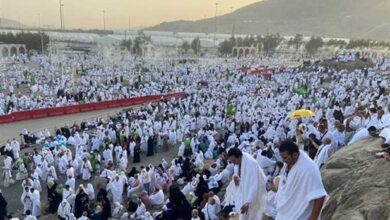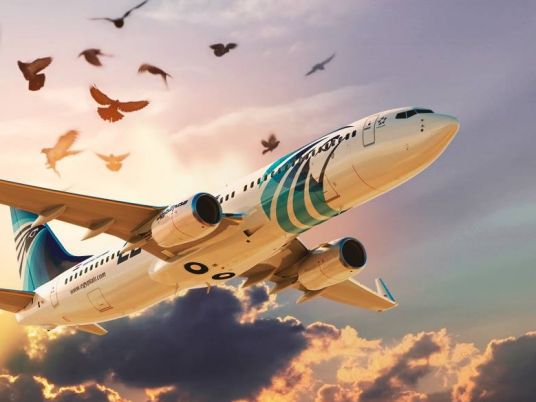Coinciding with this year's Hajj, the Muslim annual pilgrimage to Mecca, visitors to the American University in Cairo’s (AUC) Photographic Gallery are now able to fully experience Islamic tradition through the "Mecca & Medina, a photographic journey" exhibit.
The exposition offers a unique opportunity to enjoy stunning and poignant images of the holiest places in the Islamic religion.
Presenting his work for the first time in Egypt–following events in London and Istanbul–renowned Turkish photographer and filmmaker, Faruk Aksoy, employs modern techniques such as aerial views and 3D definition to capture intimate moments of worship as well as sacred sites such as the Mosque of the Prophet, Mina, and the Mount of Mercy.
“Taking pictures of these sacred places is extremely difficult,” the photographer told Al-Masry Al-Youm. “In general Saudi Arabia is very restrictive concerning taking pictures and filming. In Mecca and Medina, and especially inside the holy mosque, it is almost impossible, unless you have a very special permission from the highest authority. The main reason is that worshippers shouldn’t be distracted. Because I have been living in Saudi Arabia for 29 years, the authorities know and trust me, and they finally allowed me to take pictures.”
Born in Istanbul in 1952, Aksoy studied photography in Switzerland. “I started to take pictures when I was eleven years old. Photography is my background, and after it became my profession,” he explained.
He then contributed to several documentary videos, such as Inside Mecca for National Geographic and The Hajj: The Journey of a Lifetime for BBC. He also worked in Saudi Arabia for advertising companies and state institutions, primarily for King Abd al-Aziz University, Umm al-Qura University, the Ministry of Information, the Ministry of the Hajj, and the Administration of the Two Sanctuaries.
At the exhibition, there are only two 3D pictures that require special, gallery-provided glasses. The first represents the holiest place for Muslims, the Kaaba, a cubical structure located in the center of the Grand Mosque in Mecca, where Muslims worldwide turn towards while offering daily prayers. The second is the green Dome of Prophet Muhammad’s mosque in Medina. This is where the prophet is buried and is the second holiest site in Islam.
“These are experimental pictures that I took in 2006," the photographer explains. "The 3D definition is an old technology, but it’s currently becoming more popular, especially after the success of the film Avatar. In the future, I’d like to experiment more with the 3D technique in photography and filming, not only in Mecca and Medina, but also in developing countries.”
But the aim of the exhibition is fully conveyed, as Aksoy states, by three "traditional" pictures. The first depicts the Mount of Mercy, a granite hill located ten km east of the Kaaba also called the Mount of Arafat, the second is of the footprints of Prophet Abraham in Mecca, and, finally, the Black stone, in the eastern corner of the Kaaba.
According to Islamic tradition, Adam and Eve reunited at the Mount of Mercy after they separated following their expulsion from Paradise. “This place is very important for all three monolithic religions, even though many people are unaware of it,” Aksoy says.
The footprints of Prophet Abraham in Mecca are highly venerated. Abraham is, in fact, considered the father of the three monotheistic religions: Judaism, Christianity and Islam. “According to the Islamic tradition,” Aksoy continues, “he built the Kaaba about 4,000 years ago, and his footsteps are believed to be a miracle.”
“According to the Muslim’s belief only, the Black Stone was sent from the Paradise by the Great angel Gabriel to the prophet Abraham while he was building the Kaaba," the photographer adds. "Ismail, son of the prophet Abraham, found the stone and his father put it in the corner of Kaaba as landmark of the starting point for circling the Kaaba.”
“All these places are holy in Islam, Christianity and Judaism. We can look at them, and understand that we share the same ancestors (Adam and Eve). Therefore, we should respect each other as human beings without looking at each other’s small mistakes and try to live in peace.”
Curator of the gallery Noura Bahgat said "Mecca & Medina, a photographic journey" is quite the anomaly.
“This exhibition is really special and different from all the others we have had on the Hajj (pilgrimage) so far," Bahgat explains. "Having such a talented photographer taking photographs from very interesting angles together with the fact that he was privileged to have access to the sacred sites gave this exhibit a unique touch. Moreover, the use of the technology of 3D in photography was also very special since this is the first time this kind of photography is exhibited at the gallery as well as in Cairo.”
"Mecca & Medina, a photographic journey" is exhibited at the Photographic Gallery from 7 November until 23 December at the Abdul Latif Jameel Hall, Plaza Level, The American University in Cairo, New Campus. The gallery is open Sunday through Thursday, 10AM to 5:30PM.




